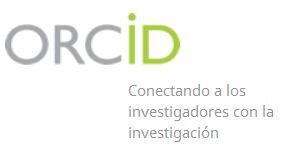Hookworm anemia, an infection underestimated by clinicians
Keywords:
hookworm infection, ancylostomiasis, iron-deficiency anemia, helminth, intestinal parasite infection.Abstract
Hookworm infection was first described by Dubini in 1838. It is an intestinal helminth infection caused by Necator americanus and/or Ancylostoma duodenale. They are frequently endemic to tropical and subtropical areas and affect both children and adults. Transmission increases when there are socio-cultural and demographic environments that favor fecal contamination; therefore, it is a public health problem worldwide. We describe the case of a 20-year-old male patient who presented to the emergency department with asthenia, adynamia, tachycardia, and generalized mucocutaneous pallor. The blood test showed severe anemia and eosinophilia. Transfusion of 4 IU of red blood cells and ferrous sulphate was required. The coprological test showed infection by Necator americanus, which was treated with albendazole. Afterwards, the patient was discharged from the health institution. Hookworm infection is a neglected cause of gastrointestinal bleeding and anemia by the clinician. Therefore, the present study highlights this parasitosis as an important cause in the differential diagnosis. In addition, greater importance is given to preventive strategies such as training the health professionals, reinforcement of hygiene techniques, decrease of contamination and increase of proper personal hygiene.
Downloads
References
Rodríguez-Guardado A, Pozo E, Fernández-García R, Amo-Fernández J, Nozal-Gancedo T. Uncinariasis como causa de anemia ferropénica en población penitenciaria. Rev Esp Sanid Penit. 2013;15(2):63-5. DOI: https://doi.org/10.4321/S1575-06202013000200004
Arteaga-Livias K, Dámaso-Mata B, Rojas-García A, Rojas-Inga I, Panduro-Correa V, Rodríguez-Bravo P. Anemia severa en adulto joven con infección por uncinarias. Rev Cubana Med Trop. 2020 [acceso 10/01/2022];72(1):1-9. Disponible en: https://pesquisa.bvsalud.org/portal/resource/pt/biblio-1126704
Caicedo AJC, Bravo JEG, Cedeño JJU, Ochoa YAR. Valores de laboratorio clínico en adultos con diagnóstico de Uncinariasis. Dominio de las Ciencias. 2021;7(4):1503-20. DOI: http://dx.doi.org/10.23857/dc.v7i4
Pizza-Restrepo J, Mosquera-Klinger GA. Diagnóstico endoscópico de Uncinariasis, presentación de un caso con anemia ferropénica grave. Rev. colomb. Gastroenterol. 2019 [acceso 21/01/2022];34(4):433-7. Disponible en: https://revistagastrocol.com/index.php/rcg/article/view/289
Vargas Rodríguez LJ, Rozo Ortiz EJ, Szemmelveisz ET, Jimenez WJP. Uncinariasis: una causa poco común de anemia severa. Rev. colomb. Gastroenterol. 2019 [acceso 05/02/2022];34(3):303-6. Disponible en: https://revistagastrocol.com/index.php/rcg/article/view/250
Bartsch SM, Hotez PJ, Asti L, Zapf KM, Bottazzi ME, Diemert DJ, et al. The Global Economic and Health Burden of Human Hookworm Infection. PLoS Negl Trop Dis. 2016;10(9):24-9. DOI: https://doi.org/10.1371/journal.pntd.0004922
Alemu M, Kinfe B, Tadesse D, Mulu W, Hailu T, Yizengaw E. Intestinal parasitosis and anaemia among patients in a Health Center, North Ethiopia. BMC Res Notes. 2017;10(1):632. DOI: https://doi.org/10.1186/s13104-017-2957-2
Degarege A, Yimam Y, Madhivanan P, Erko B. The relationship between helminth infections and low hemoglobin levels in Ethiopian children with blood type A. J Helminthol. 2017;91(3):278-83. DOI: https://doi.org/10.1017/S0022149X16000286
Hotez PJ, Brooker S, Bethony JM, Bottazzi ME, Loukas A, Xiao S. Hookworm infection. N Engl J Med. 2004;351(8):799-807. DOI: https://doi.org/10.1056/NEJMra032492
Srygley FD, Gerardo CJ, Tran T, Fisher DA. Does this patient have a severe upper gastrointestinal bleed? JAMA. 2012;307(10):1072-9. DOI: https://doi.org/10.1001/jama.2012.253
Carrada-Bravo T. Monografías ilustradas de patología clínica. Uncinariasis: ciclo vital, cuadros clínicos, patofisiología y modelos animales. Rev Mex Patol Clin Med Lab. 2007;54(4):187-99.
Fernández-Rivas G, Rivaya B, Romaní N, Hao Wang J, Alcaide M, Matas L. Diagnosis of soil-transmitted helminth infections. An unsolved problemin the omics era. Enfermedades Infecciosas y Microbiología Clínica (English ed.). 2019;37(Suppl)1:20-25. DOI: https://doi.org/10.1016/s0213-005x(19)30178-8 PMID: 31138419.
Grimes JET, Tadesse G, Gardiner IA, Yard E, Wuletaw Y, Templeton MR, et al. Sanitation, hookworm, anemia, stunting, and wasting in primary school children in southern Ethiopia: Baseline results from a study in 30 schools. PLoS Negl Trop Dis. 2017;11(10):e0005948. DOI: https://doi.org/10.1371/journal.pntd.0005948
Gonzales E, Huamán-Espino L, Gutiérrez C, Aparco JP, Pillaca J. Caracterización de la anemia en niños menores de cinco años de zonas urbanas de Huancavelica y Ucayali en el Perú. Rev Peru Med Exp Salud Pública. 2015 [acceso 11/02/2022];32(3):431-9. Disponible en: http://www.scielo.org.pe/scielo.php?script=sci_arttext&pid=S1726-46342015000300004&lng=es
Marcos Raymundo LA, Maco Flores V, Machicado A, Samalvides Cuba F, Terashima Iwashita A, Quijano C, et al. Diferencias de prevalencia de parasitosis intestinal entre los hospitales Militar y Regional de Iquitos, Loreto-Perú. Diagnóstico (Perú). 2002 [acceso 11/02/2022];185-7. Disponible en: https://pesquisa.bvsalud.org/portal/resource/pt/lil-322578
Nutman TB, Ottesen EA, Ieng S, Samuels J, Kimball E, Lutkoski M, et al. Eosinophilia in Southeast Asian refugees: evaluation at a referral center. J Infect Dis. 1987;155(2):309-13. DOI: https://doi.org/10.1093/infdis/155.2.309 PMID: 3805765
Serre-Delcor N, Treviño B, Monge B, Salvador F, Torrus D, Gutiérrez-Gutiérrez B, et al. Eosinophilia prevalence and related factors in travel and immigrants of the network +REDIVI. Enferm Infecc Microbiol Clin. 2017;35(10):617-23. DOI: https://doi.org/10.1016/j.eimc.2016.02.024 Epub 2016 Mar 28
Chapman PR, Giacomin P, Loukas A, McCarthy JS. Experimental human hookworm infection: a narrative historical review. PLoS Negl Trop Dis. 2021 Dec 9;15(12):e0009908. DOI: https://doi.org/10.1371/journal.pntd.0009908
Caicedo AJC, Bravo JEG, Cedeño JJU, Ochoa YAR. Valores de laboratorio clínico en adultos con diagnóstico de Uncinariasis. Dominio las Cienc. 2021 [acceso 15/02/2022];7(4):116. Disponible en: https://dialnet.unirioja.es/servlet/articulo?codigo=8383964
Mbong Ngwese M, Prince Manouana G, Nguema Moure PA, Ramharter M, Esen M, Adégnika AA. Diagnostic Techniques of Soil-Transmitted Helminths: Impact on Control Measures. Tropical Medicine and Infectious Disease 2020;5:93. DOI: https://doi.org/10.3390/tropicalmed5020093
Moser W, Schindler C, Keiser J. Efficacy of recommended drugs against soil transmitted helminths: systematic review and network meta-analysis. BMJ. 2017;358:j4307. DOI: https://doi.org/10.1136/bmj.j4307
Centers for Disease Control and Prevention (CDC). Biosafety in Microbiological and Biomedical Laboratories. 6th edition; 2020.
Centers for Disease Control and Prevention (CDC). Parasites-Hookworm; 2020.
Downloads
Published
How to Cite
Issue
Section
License
Licencia Creative Commons
La Revista Cubana de Medicina Tropcial se encuentra bajo una
Este sitio está bajo Licencia de Creative Commons Reconocimiento-NoComercial 4.0 Internacional.




